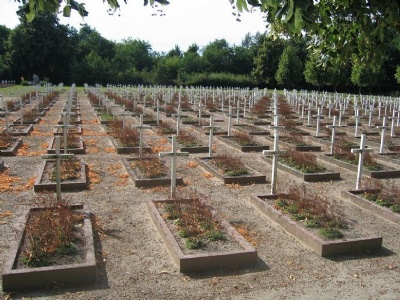Gardelegen
When the allies on all fronts pushed back the German armies, the Germans evacuated the concentration camps that were too close to the front. The remaining prisoners who were not too weak were forced out on what were called Death marches towards other camps that were further away from the front. The name Death march comes from the fact that during these marches thousands of prisoners died out of exhaustion, illness or being murdered by the SS. When the Dora-Mittelbau concentration camp commanded the evacuation of the camp and its satellite camps in early April, a Death march began towards Bergen-Belsen, Sachsenhausen and Neuengamme camps. After a few days, about 4,000 prisoners reached the city of Gardelegen in the state of Saxony-Anhalt.
The train they had been evacuated in could no longer continue because the rails were destroyed. The prisoners were then forced to continue on foot, but about 1000 prisoners were too weak and these were taken to a large barn. On April 13, 1945, prisoners were murdered by SS units, local police units and the Hitler Youth. The prisoners were locked in the barn, which was then ignited and all who tried to escape were mercilessly shot down by the guards outside. The next day on April 14, the guards returned to remove the evidence and shoot any survivors, but the rapidly advancing American army thwarted the Germans’ plans. When the Americans discovered the massacre, they found 1016 heavily burned bodies that in most cases could not be identified.
Current status: Demolished with information boards (2008).
Location: 52° 32' 16 N, 11° 25' 19 E
Get there: Car.
Follow up in books: Blatman, Daniel: The Death Marches: The Final Phase of Nazi Genocide (2003).




Next to the site, a cemetery for the victims was established and the Gardelegen city was required to take care of the cemetery for all eternity.